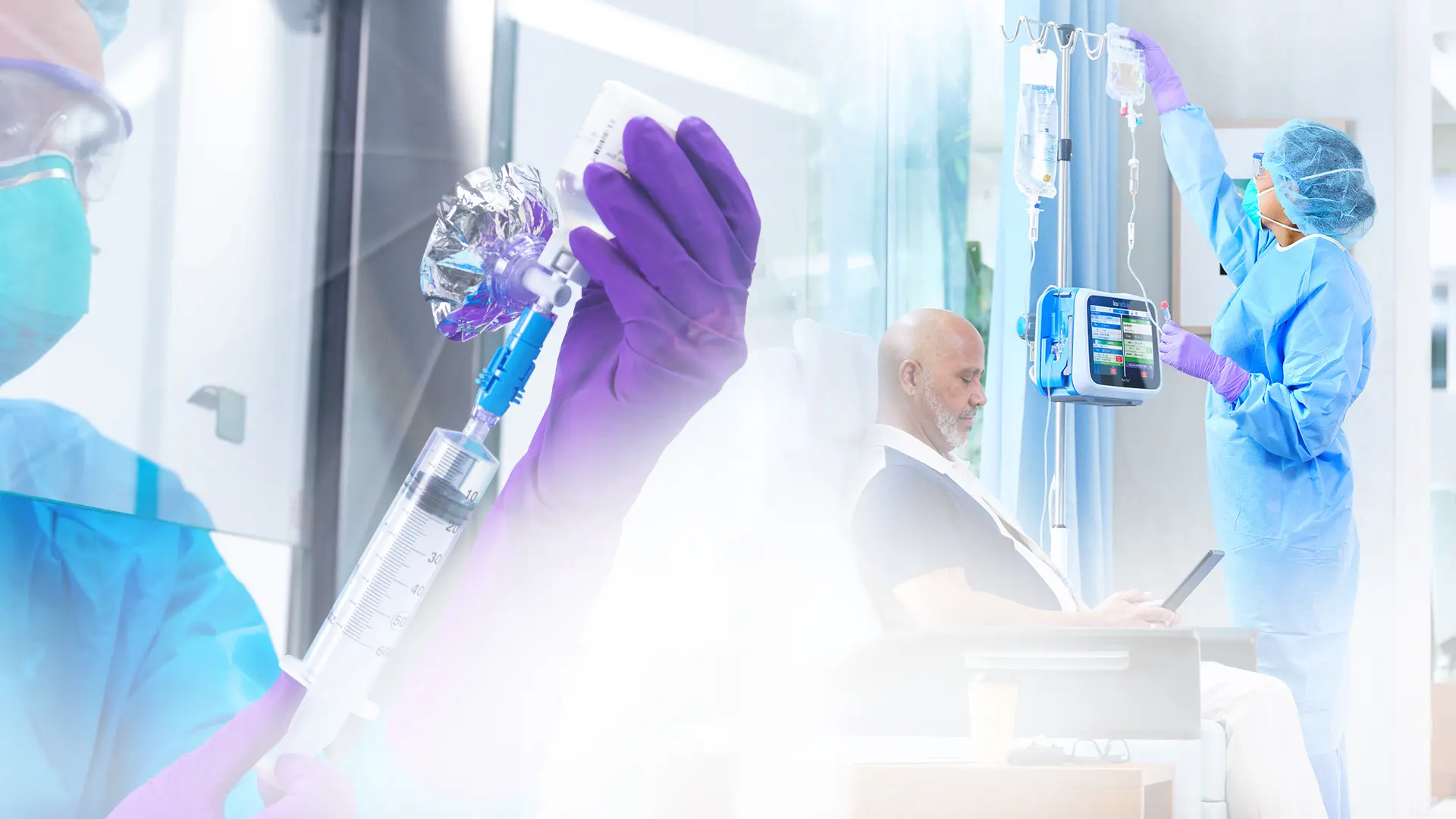Breathe Easier
Closed System Transfer Devices (CSTDs) and USP <800> Standards
ICU Medical Blog
March 1, 2024
Maintain compliance while elevating safety for all
The enforcement of USP <800> guidelines marks a significant turning point in healthcare staff and patient safety, requiring enhanced safety measures across multiple hospital departments.
Originally published in 2016, USP General Chapter <800> provides standards for the safe handling of hazardous drugs to minimize the risk of exposure to healthcare personnel, patients, and the environment.
USP <800> became compendially applicable in November of 2023. So, whether you’re already implementing your USP <800> plan or just getting started, the clock is ticking.
Here are some points to consider to help your facility support equal safety for everyone in the hazardous drug continuum and achieve USP <800> compliance that works for all parties involved. Let’s get started.
Safety starts in pharmacies…
USP <800> explicitly requires the use of closed system transfer devices (CSTDs) by nursing staff. However, while recommending CSTDs in the pharmacy, the guidelines stop short of requiring their use by pharmacists and technicians.
And yet, the hospital pharmacy is where many inherent risks live, especially with the compounding of hazardous drugs. So, should you consider investing in CSTDs for your pharmacy?
While existing pharmacy safeguards such as containment primary engineering controls (C-PECs) and personal protective equipment (PPE) may seem "good enough," escaped drug residue can be present even in the cleanest of rooms, settling on floors, desks, clothes, and the body.
Studies strongly advocate integrating CSTDs into pharmacy protection strategies as they have demonstrated efficacy in reducing contamination and potential worker exposure.1,2
In fact, one multi-site surface wipe study showed contamination reduced to 5.8% of samples collected, down from 66.7% before CSTDs were implemented.3
So, while CSTD use in the pharmacy is not a requirement, studies and USP <800> recommendations emphasize the use of CSTDs as additional protection during hazardous drug preparation. Short version? If you can invest in CSTDs now, or you plan to down the road, you probably should.
. . . And continues through the entire continuum of care.
Hazardous drug safety is not just a pharmacy issue but a facility-wide issue. Adhering to USP <800> standards is more than procedural compliance—it signifies a commitment to the core goal of these safety measures: protecting all healthcare personnel.
Everyone is on the continuum of care—the compounders, transporters, administration, disposal—and all get an equal chance to be protected with the use of the right CSTD.
However, even with a CSTD there is another point to consider: the risk of hazardous drug exposure associated with accidental disconnections or challenging routes of administration such as the intravesical delivery of Bacillus Calmette-Guerin (BCG) or the ambulatory delivery of Fluorouracil (5-FU). You can potentially increase safety for all personnel with bonded, non-removable CSTD components or with kits designed specifically for challenging routes of delivery.
These specialized kits require less assembly and effectively help prevent hazardous drug exposure beginning with pharmacy preparation—protecting all individuals inside and outside the IV room. But even with a wide range of CSTDs on the market, only a select few manufacturers offer kits equipped with non-detachable, bonded connections that stay secure from preparation through disposal.
Get Pharmacy and Nursing on the same page
Although USP <800> standards may require new devices to protect staff, the inherently different tasks and priorities of the pharmacy and nursing departments can often result in preference conflicts that lead to both workflow strain and safety challenges.
For example, the pharmacy may select a CSTD that works well for technicians preparing hazardous drugs but requires extra components, adapters, assembly, and training during administration. That could potentially affect the workflow in the administration area.
The optimal approach is collaborative, where Nursing and Pharmacy function as a unified team and partner with a CSTD manufacturer who can combine their preferences into a single, standardized system, easing compliance while enhancing safety and efficiency for all parties.
Start with an assessment
Determining a starting point for USP compliance can be daunting—even CSTDs are just a single component of a much wider web of systems, policies, and procedures. A knowledgeable third party’s assessment of hazardous drug handling offers an unbiased evaluation of current protective measures.
It highlights potential concerns and suggests improvements.
ICU Medical offers a complimentary assessment to assist healthcare providers in reducing exposure risks and achieving USP <800> compliance.
References
- Hodson L, Ovesen J, Couch J, et al. Managing hazardous drug exposures: information for healthcare settings. Cincinnati, OH: U.S. Department of Health and Human Services, Centers for Disease Control and Prevention, National Institute for Occupational Safety and Health, DHHS (NIOSH) Publication No. 2023-130. https://doi.org/10.26616/NIOSHPUB2023130. Accessed December 5, 2023.
- Salch S, Zamboni W, Zamboni B, Eckel S. (2019). Patterns and characteristics associated with surface contamination of hazardous drugs in hospital pharmacies. Am J Health Syst Pharm. 76. 591-598. 10.1093/ajhp/zxz033.
- Bartel SB, Tyler TG, Power LA [2018]. Multicenter evaluation of a new closed system drug-transfer device in reducing surface contamination by antineoplastic hazardous drugs. Am J Health Syst Pharm. 75(4):199–211, quoted in Hodson L, Ovesen J, Couch J, et al. Managing hazardous drug exposures: information for healthcare settings. Cincinnati, OH: U.S. Department of Health and Human Services, Centers for Disease Control and Prevention, National Institute for Occupational Safety and Health, DHHS (NIOSH) Publication No. 2023-130. https://doi.org/10.26616/NIOSHPUB2023130. Accessed December 5, 2023.









